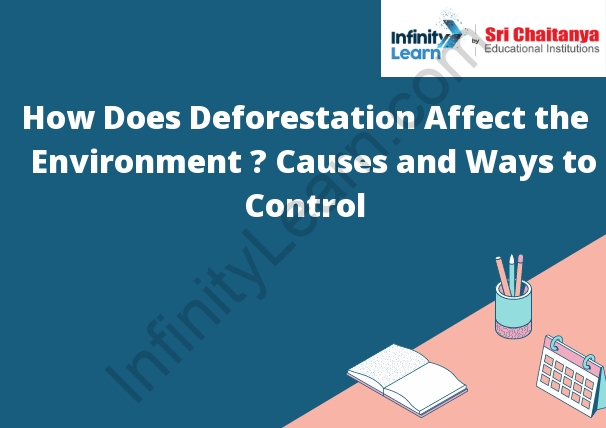Table of Contents
Deforestation – Its Effects on the Environment and How to Control It
How Does Deforestation Affect the Environment – Causes and Ways to Control.
- Deforestation is the removal of forests, by whatever means. Deforestation occurs for a variety of reasons, including logging, agriculture, mining, and land development. The most severe form of deforestation is when forests are cleared for the sole purpose of agriculture.
- Deforestation has a number of negative environmental effects. Forests are important in the water cycle, and their destruction can lead to increased flooding and erosion. Deforestation also contributes to climate change, as trees are natural carbon sinks. When forests are cleared, the carbon that they have stored is released into the atmosphere, exacerbating global warming.
- Deforestation also has a number of social and economic effects. Deforestation can lead to the loss of biodiversity, as well as the loss of important cultural and ecological values. Deforestation can also have a negative impact on local economies, as it can lead to the loss of jobs in the forestry industry.
There are a number of ways to control deforestation. Governments can enact laws and regulations to prohibit deforestation. Forest management practices can also be used to minimize the impact of deforestation. Conservation efforts can help to protect forests and their inhabitants.

Effects of Deforestation
Deforestation is the removal of forests, by whatever means. Deforestation can result from natural causes, such as fire or animal grazing, or from human activities, such as logging, mining, and agriculture. Deforestation has many negative consequences for the environment.
One of the most serious consequences of deforestation is the loss of habitat for wildlife. Forests are home to millions of species of animals, plants, and insects. When forests are cleared, these species are forced to find new homes, often in other parts of the world. As a result, deforestation can lead to the extinction of many species of animals and plants.
Deforestation also has a serious impact on the climate. When forests are cleared, the trees and other plants that once absorbed sunlight and carbon dioxide are replaced by asphalt and other man-made materials. This causes the amount of sunlight and carbon dioxide that is absorbed by the earth to increase, which in turn causes the earth’s temperature to rise. As a result, deforestation is a major contributor to global warming.
Deforestation also causes serious problems for the earth’s water cycle. Trees and other plants play a vital role in the water cycle by absorbing water from the soil and releasing it into the atmosphere. When forests are cleared, the soil is exposed to the sun and the water is quickly evaporated. This causes the level of water in the soil to drop, which can lead to drought conditions in the area.
Deforestation
Ways to Restore Forests
There are many ways to restore forests, including planting new trees, stopping deforestation, and restoring damaged ecosystems.
One way to restore forests is to plant new trees. This can be done by planting trees in areas that have been cleared for agriculture or development, or by planting trees in areas that have been damaged by fire or storm. Trees can also be planted as part of a reforestation project.
Another way to restore forests is to stop deforestation. Deforestation is the clear-cutting of forests for the purpose of agriculture, development, or mining. If deforestation is stopped, the forests will have a chance to recover.
Another way to restore forests is to restore damaged ecosystems. Ecosystems are systems of plants, animals, and microorganisms that interact with one another and with their environment. If a forest ecosystem is damaged, it can be restored by repairing the damage and reintroducing the lost plants and animals.



